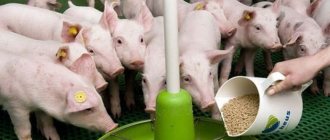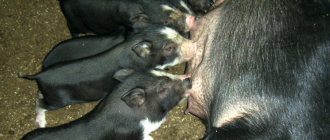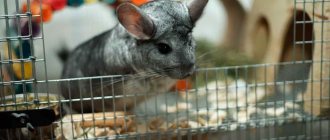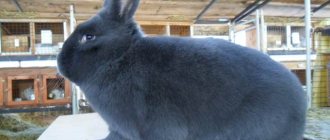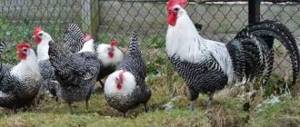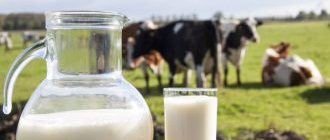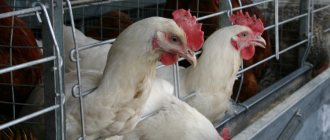The profitability of keeping pigs, the rate of live weight gain, the taste of meat and lard directly depend on a properly selected feeding ration. Many owners of private farmsteads do without expensive fortified feed, preparing feed mixtures from their own ingredients. To ensure that animals, in addition to all nutrients, receive sufficient quantities of necessary vitamins and microelements, specialized BMVD or premixes for pigs are usually added to such mashes.
The addition of premixes improves pig productivity and health while reducing feed consumption
We offer you to familiarize yourself in detail with what premixes should consist of, what they are and what the purpose of their use is.
Tips for using premixes
The pig farmer needs to remember that the premix is not feed.
This composition is gradually added to the pigs’ usual diet every day. It is important to follow the following recommendations:
- Choose suitable compositions. There are many types of premixes - for fattening, growing young piglets, and restoring various body functions. To achieve the best effect, you should choose premixes according to your goal.
- Monitor the composition of the feed. For enrichment with premixes to be rational and complete, the main feed must contain a lot of protein.
- Follow the dosage according to the instructions. It is always indicated on the package with the supplement. As a rule, the premix is used at a rate of 20 kg. additives per ton of feed.
Compound feed with additives is eaten with appetite by piglets of all ages
Who should be given premixes?
Experienced farmers advise adding premixes to the feed of pregnant pigs. Such support will provide them with the energy to bear piglets, increase the body’s defenses and guarantee a healthy litter.
It is especially important not to forget about complementary feeding of the sow during the period of active breastfeeding. Premixes are also given to piglets after reaching a week of age.
A young growing body needs vitamins. However, the premix will not hurt for adults either: it will act as a disease prevention and support the immune system.
A sow during pregnancy and lactation needs vitamins more than ever
Recommendations for the use of biostimulants
A correctly functioning biostimulator has the following characteristics:
- should not accumulate in the intestines or muscle tissue;
- must be non-toxic to people and animals;
- do not affect the normal intestinal microflora;
- has no side effects;
- its use is economically justified.
The biostimulant must also not increase bacterial drug resistance or be involved in the transfer of drug resistance from one species to another.
The use of stimulants must take into account a number of rules:
- for normal weight gain, the farmer must draw up a program for the use of growth stimulants, which takes into account the age and condition of the pets;
- control your weight and pay attention to developmental deviations; you don’t need to hope that “it will go away on its own”;
- Before introducing a dietary supplement into your diet, make sure that you have correctly diagnosed the problem and chosen the direction to solve it;
- before purchasing the drug, read the instructions and make sure that this is what the livestock or individual needs;
- use medicated feed strictly for its intended purpose;
- do not buy food for other animals: cows and pigs have different digestive systems and their supplements are not interchangeable;
- do not use several drugs at the same time;
- record the result of each use of the drug, this will help if another batch of pigs has the same problem;
- change the drug if you do not see changes within 2-3 days;
- monitor proper nutrition, the sanitary condition of the pigsty and animals, and take measures to prevent diseases.
Did you know? Studies have shown that feed additives in the diet of sows increase the rate of conception and the number of piglets in the litter, and during the feeding period they increase the survival rate of offspring.
Types and composition of premixes
We recommend reading our other articles
- Guinea fowl breeds
- Carrot variety Shantane
- Carrot variety Tushon
- Vyuga cabbage variety
Premixes for pigs come in different types: vitamin, mineral, vitamin-mineral, with amino acids. In addition, premixes are divided into groups depending on their purpose. So, for example, there are premixes for newborn piglets, young animals, those that are fed during fattening, to increase muscle mass, with a medicinal effect (increasing immunity), for pregnant females, and so on. The most well-known and available premixes for pigs from various manufacturers are described below.
Premixes for pigs come in different types
- "Salvamix" is a high-quality premix from Germany. Contains an abundance of vitamins A, D3, E, B1, B2, B6, B12, as well as calcium, nicotinic acid, mel, iodine, zinc, choline, manganese, iron, cobalt, selenium. There are 10 kg of Salvamix per ton of feed;
- "Borka" is a well-known manufacturer of premixes at an affordable price. Produces supplements for pigs and piglets. It contains vitamins A, D3, B3, B5, B12 and minerals (calcium, phosphorus, manganese, zinc, iodine, copper), as well as filler, amino acids, and antioxidants. When used according to the instructions (10 g of premix per 1 kg of feed), animals receive the daily requirement of minerals (available in the composition);
- “Purina” is a Ukrainian premix used to increase the muscle mass of pigs (fattening). Sometimes used as an additive to starter, grower, finisher. Has an abundance of microelements. Does not contain growth hormones;
- “Good Peasant” is a popular domestic manufacturer. It produces premixes for dairy piglets, sows, an anthelmintic premix and another type fed during the fattening period. This premix increases the weight gain of pigs up to 1.5 times, improves the nutritional value of the feed and the taste of the resulting lard or meat. Application depends on the type of “Good Peasant” premix. The proportions are indicated on the packaging of each of them;
- “Dar Veles” has a series of premixes for piglets from 3 months and for fattening pigs. They improve the composition of the feed, its digestibility and absorption. The composition contains vitamins A, D3, B2, B3, B4, B5, B12, calcium, manganese, cobalt, selenium, iodine, copper, iron, enzymes, flavors and antioxidants. Per kilogram of feed, take no more than 10 g of additive.
Feedback from livestock farmers
Alexandra, 44 years old, Vitebsk region
As a pre-start for pigs, I order Purina, and then I take a Polish premix, called Dolphos. I've been using it for 4 years now. At one time I tried a lot of vitamin and mineral supplements for various livestock and poultry. I settled on Dolphos because they have a wide range for almost all types of animals and, most importantly, the prices are quite reasonable. I keep a bull for fattening, and I also buy it for him. The main thing is to give the pigs a good start; then they can simply grow on grain and whey. By 7 months, you get exactly what you need – both in terms of meat/fat yield and financial costs.
Igor, 41 years old, Saratov
We take Borka for our pigs and give them daily, starting from 2-3 months. I can say for sure that they grow faster and better, and they get sick less. The meat turns out delicious, we sell it and eat it ourselves without fear, because the additives are natural, without any hormones or antibiotics.
Irina, 32 years old, Chernigov
We mainly use Lviv D-Mix. We give it along with the main food only in winter and early spring. During the warm season, our pigs graze all day long and get all the vitamins the body needs with fresh grass and seasonal fruits and vegetables.
Ksenia, 38 years old, Balashikha
I treat all these BMW and VM complexes with some caution. As for me, it’s all chemistry. If you raise pigs for yourself, then it is more important to feed them with quality products.
Mikhail, 56 years old, Perm region
I was interested in information about Sano premixes. About Aminogold they write that you need to add 2.5-3% per kilogram of feed mixture from wheat, barley and soybean cake (you can also add corn). And to fatten a pig up to 100-100 kg, it seems like you need 320 kg of feed. I did the math and it turns out that the total cost of feed is much lower than without additives.
How to use feed additives for cattle
A proven and well-proven method of using feed additives is to include them in the feed. In order for the benefits to be as effective as possible, you should take care of the feeding schedule, and also, if necessary, periodically adjust the animal’s diet. When supplementing food with feed additives, it is necessary to calculate the age and weight of the animal
It is also important to know that all additives cannot be added to an animal’s food at the same time. Balanced nutrition for cattle is the basis for the success of the livestock industry, but to achieve better results you need a thoughtful and competent approach
How to use premixes correctly
Premixes should be used with caution and strictly according to the instructions written on each package of the drug.
The main thing is to homogeneously mix the grain part of the feed with the additive. If mixing is poor, some animals may receive more of the additive when feeding. This will lead to poisoning and illness in the pigs.
In addition, the following features of the use of the substance should be taken into account:
- The premix cannot be added to hot or warm food, as the vitamins included in its composition will disintegrate. For the same reason, the premix cannot be heated.
- You should not overfeed animals with vitamin and mineral supplements in order to speed up their growth and muscle gain. The artiodactyl body cannot cope with such a task.
- You should buy drugs from well-known and well-established manufacturers.
- Premixes should be introduced into the diet gradually, increasing the dose in equal parts to the maximum possible value indicated on the product packaging.
- Do not use expired additives. While minerals can be preserved in them, vitamins cannot.
- Drugs should be included in the daily menu of pigs no more than twice.
- Supplements can be added to the piglet menu on the 5th day of life.
- The purpose of the supplement should be taken into account. For example, premixes designed for sows cannot be fed to the main herd, etc.
What is premix
When selling meat at the market, the seller, as an advertisement for his product, may note that the pig was not fed premixes
It is important to understand whether the fact that an animal has been fed premixes throughout its life is harmful to the human body.
The word “premix” itself consists of two Latin words “Prae” - “preliminarily” and “misceo” - “mix”. In other words, a premix means a certain amount of elements pre-mixed in certain dosages. Such additives are used in the food, feed, polymer, and rubber industries.
In a narrow sense, a premix is a biologically active additive that enriches mixed feed and feed concentrates.
Compound feed is created as follows: the grain group available on the farm is mixed with the protein group (soybean, meal, cake, fish or meat and bone meal). The premix is added to this mixture. If it is 1%, then 99 parts of feed are added to one part of it, and if it is 0.5%, then 199 parts, respectively.
Premixes began to be produced and actively used in the 50-60s of the last century. Initially, feed mixtures were enriched with vitamins and microelements, then with antibiotics, enzymes, amino acids and drugs that stimulate livestock growth.
Unfortified feed creates a diet that does not meet the needs of the pig’s body (pure wheat, barley, other grains). The animal will consume huge amounts of food, trying to maintain the body in a healthy state. The negative consequences of this situation are the conversion of a large amount of expensive, protein-enriched feed into manure, and a delay in the development of the livestock. So the use of premixes benefits not only the animal, but also the financial condition of the farmer.
What is the effect of the premix on pigs?
Also check out these articles
- Nubian goats
- Early varieties of apple trees
- What can and cannot be given to turkeys
- Fittonia flower
Positive effects of premixes for pigs
The positive effect of premixes for pigs is associated with their vitamin composition.
- Vitamin A in premixes promotes the rapid development of the animal, improves vision, and normalizes intestinal function;
- B1 and B6 normalize the nervous system, as well as muscle function;
- B2 helps with impaired absorption of nutrients into the body;
- B4 protects the animal from obesity, so it is indispensable for fattening pigs;
- Vitamin D3 is used for problems with bones and joints. It is added to food and separately for rickets;
- Vitamin E improves reproductive function, indispensable for pregnant sows;
- K – responsible for blood clotting. If it is deficient, severe bleeding may occur even with a small scratch.
But not only vitamins have a positive effect on the life of pigs when consuming premixes. Premixes for pigs also contain many minerals.
- Calcium for females and young piglets is essential for the normal development of bones and tissues. If it is deficient, even an adult animal can get sick;
- Iron and copper normalize blood composition and play an important role in oxidative processes;
- Potassium regulates the condition and amount of tissue fluid, affects the functioning of the heart;
- Manganese has a positive effect on metabolism, reproductive function and growth of the animal;
- Zinc is needed during puberty. It is very useful for females and males during the mating period;
- Iodine regulates the amount of hormones and their work in the body. Useful for overexcited, uncontrollable pigs, animals with vascular and liver problems.
Interesting! Bioadditives make up no more than 30% of the premix. The remaining components are a filler (wheat bran or something similar), limestone to dilute the taste, as well as substances that promote better absorption of vitamins and minerals.
What is the best premix for pigs?
Today the market is replete with all kinds of brands that produce products for pets. The following brands can be called the best among all additives:
- Borka. The additive was produced by Capital-PROK JSC specifically for piglets and pigs. This premix improves the average daily weight gain of young animals, improves immunity, ensures healthy growth of pigs and reduces financial costs for feed. The composition includes vitamins (groups B, A, D3), macroelements (phosphorus, calcium), microelements (zinc, manganese, copper, iodine), antioxidants, amino acids and fillers. There are no antibiotics, growth stimulants or hormones.
- Good Villager. produces its products in four types: for small piglets, sows, pigs during the fattening period and anthelmintic premixes. They prevent the development of various diseases in animals, help get rid of worms, help save young animals and get multiple farrows. Additives also increase animal weight gain by 1.5 times, increase nutritional properties and improve the taste of meat.
- Gift of Veles. These feed additives are intended for young animals (from 3 months) and for fattening adult pigs. They enrich the diet with minerals and vitamins, improve the digestibility of feed, as well as animal weight gain. The composition includes vitamins, minerals, a complex of enzymes, and antioxidants.
- Borka-Champion. This vitamin and mineral complex is designed for faster fattening. With its help, you can achieve weight gain by 20% and reduce the fattening period of pigs by 30 days. The additive is used to prevent rickets, anemia and curvature of the limbs. The composition is enriched with vitamins, micro and macroelements, fillers (chalk, bran).
Types of feed
The modern market and stores offer their customers 4 types of ready-made food, each of which has certain characteristics.
- Dry is the most popular and easy to transport. But its use is not always advisable, since it contains a small amount of water. If this type of feed is preferred, the piglets will have to be given additional water.
- Liquid is less popular because it is inconvenient to transport due to the large amount of water in its composition. When constantly feeding an animal with liquid food, problems with salivation appear.
- Wet - considered the most practical because it has a balanced composition. Better absorbed by animals.
- Granular – presented in the form of small dry granules. It has the features of dry food, but is prepared using a different technology.
- Feed concentrate for pigs implies a balanced feed mixture with a high content of protein additives, mineral and vitamin complex. Currently, farmers prefer this type of feed because it contains the maximum amount of ingredients and guarantees one hundred percent results.
Depending on the type of feeding, mixtures are:
- protein - their composition is rich in representatives of legumes, different types of flour and meal;
- coarse - pork feed includes hay, bran, whole vegetables and waste;
- energy - grain crops predominate in the feed;
- from waste – the composition of the feed is represented by waste from the meat and dairy industries.
This feed helps strengthen the pigs’ immune system and increase daily weight gain.
Compound feed for pigs can have various additives.
Feed concentrate for pigs is a complete feed mixture with a high content of protein, mineral and protein-vitamin additives. Farmers prefer to use concentrate, which guarantees 100% performance.
Benefits of a fortified diet during fattening
Premixes help to achieve good results depending on the goals set when raising animals.
Supplements are recommended to be introduced into the diet not only of piglets and young animals for fattening, but also of pregnant and lactating sows
that the most significant indicators are:
- Increase in daily weight gain (by 15%) and overall productivity (by 40%).
- Reducing the fattening period (by 2-3 weeks).
- Reduced quantity and cost of feed (savings of about 30%).
- Stimulating digestion and better absorption of feed, the ability to include hard-to-digest foods (oats, meal, etc.) in the diet.
- Increasing immunity, preventing rickets, anemia, gastrointestinal diseases.
- Improving the taste of meat products.
Positive effects are observed when additives are introduced into the feeding diet of sows and boars - the likelihood of infertility and mortality of offspring is reduced, the number of piglets in the litter increases, and their vitality increases.
What are premixes and what are they for?
All modern farms use additives because they have a positive effect on farm animals.
Premix comes from the words “to pre-mix.” The premixes contain vitamins, micro- and macroelements, minerals, amino acids, antioxidants, and antimicrobials. The filler (a product that dissolves and retains beneficial substances) can be made from bran, crushed grains, herbal flour, cake, yeast.
We advise you to find out why and how to use grass flour, sunflower cake and meal, soybean meal.
This substance is widely used in the technological process of mixing dry ingredients and dispensing them in small quantities.
The premix is used in the technology of uniform mixing of dry components. This technology is used for the production of compound feed, in the food, rubber, and polymer industries.
Learn how to make feed for chickens and pigs with your own hands.
Why do we give premixes to animals?
The ingredients of the mixture help to increase the digestibility of nutrients in the feed and ensure their high quality absorption by the body. Vitamin complexes improve and accelerate the fermentation process, normalize hormonal levels, and increase the animal’s immunity.
Important! You cannot feed an animal with a mixture that is intended for another animal. The composition may contain substances that are not digestible. Thus, pets get sick less, reproduce better, and perform their important functions on the farm (for example, cows give more milk)
The nutritional value of eggs in birds increases. Animals gain weight faster
Thus, pets get sick less, reproduce better, and perform their important functions on the farm (for example, cows give more milk). The nutritional value of eggs in birds increases. Animals gain weight faster.
Thanks to the mixtures, the body of pets is cleansed of toxic, radioactive, poisonous substances that have entered through the external environment.
Minerals strengthen the tissues, skeleton, and muscles of pets.
Did you know? If there is not enough calcium or protein in a pig's feed, it will begin to bite off the tails of its relatives.
Composition of feed premixes
When choosing feed starters for piglets, it is necessary to take into account the age of the animals, grain grinding, feed consistency and, of course, composition. Read about what feed is used to feed pigs here.
Pre-starter or pre-starter
The stomach of a small piglet is very delicate and is not adapted to digesting roughage, so for babies they prepare or buy formulations in which the grain is finely ground - extruded feed. In this case, the grain should not be subjected to heat treatment - this reduces the nutritional value.
Another important prestarter factor is the consistency of the product. Feeding should be liquid or wet food only. The humidity of the first option reaches 74%. It is rarely found in stores; wet feed is much more accessible. It has a uniform consistency and is easily digestible. Prepare wet food by mixing the dry mixture and warm water in a ratio of 1:1.5. It is better not to use dry food, but if they are used, it is necessary to provide the piglets with constant access to fresh water.
Premium prestarters may include dry colostrum preparations
You can also periodically use granulated food - it contains a minimal amount of bacterial microflora. In addition, the granulated prestarter is enriched with special additives that improve absorption ability, as well as amino acids.
How much grain is needed to feed a pig, read in this material.
The composition of pre-start feed varies within certain limits. However, what they have in common is a high energy value, a large amount of microelements, especially iron, and lactose. One example of the composition is presented in the table.
| Component content, % | Feed component |
| 27 | Crushed barley |
| 18 | Alfalfa meal |
| 26 | Oats |
| 16 | Meat and bone meal |
| 9 | Sunflower meal |
| 2 | Feed chalk |
| 1 | Salt |
| 1 | Premix (vitamin supplement) |
Start or start
Changes in diet should be made very slowly. As a rule, the transition to starter feed coincides with the weaning of piglets from the sow and the disappearance of mother's milk from the diet. It is recommended to mix dry food not with water, but with oat milk or skim milk to attract animals.
It is necessary to follow the recommended feeding regimen and weight ratios. Overeating increases the risk of obesity, stomach disorders and diarrhea.
During this period, as well as during supplementary feeding, wet and liquid feeds are preferred. Granulated is rarely used, preferably after weanlings get used to independent “adult” life.
The composition of the Start gradually changes, depending on the age of the piglets. In the table, the content of components is given as a percentage.
| Components | Animal age | |
| 14-42 days | 43-60 day | |
| Powdered milk | 21 | 9,3 |
| Fish flour | 4 | 4 |
| Feed yeast | 1,5 | 3 |
| Soy flour | 15,3 | 6 |
| Herbal meal | 1 | 2 |
| Barley flour | 47 | 30 |
| Wheat flour (bran) | — | 19,8 |
| Corn flour | — | 21,1 |
| Animal fats | 3,5 | 1,2 |
| Sucrose | 2,4 | — |
| Chalk | 0,5 | 1 |
| Premix | 3,78 | 2,57 |
Premixes are added both to regular homemade food and to commercially prepared food. The composition of the supplements varies, but always includes vitamins A, C, D, E, K, B, minerals, especially iron, probiotics, enzymes that improve digestion, as well as essential amino acids and antibiotics.
Standard Requirements
In Russia and other countries, commercial production of feed and feed additives for farm animals is carried out in accordance with established requirements. In particular, the technical conditions for premixes are enshrined in the interstate standard (GOST 26573.0-2017), which was developed by specialists from the All-Russian Research Institute of Feed Industry (VNIIKP JSC) and put into effect on January 1, 2021 .
Premixes are a homogeneous dry mixture of crushed components; according to the standard, the mass fraction of moisture ranges from 6 to 13% (depending on the base-filler)
Composition and raw materials
Fortifying additives consist of filler and bioactive substances:
- Fillers are feed products that have a high adsorption capacity, maintain homogeneity for a long time and provide the best mixing efficiency with enrichment products. Finely ground grains (wheat, barley, rye), bran, meal and cakes, feed yeast, feed L-lysine concentrate, mineral raw materials (biotrin, bentonite, belotin, zeolite, limestone flour, feed dicalcium phosphate (precipitate), etc.) are used as filler. ). It is possible to combine several fillers at the same time.
- Feed vitamins (A, C, D, E, K3, group B, etc.), salts or oxides of microelements (iron, manganese, copper, iodine, zinc, magnesium, cobalt, selenium), sulfur, amino acids (L-lysine, tryptophan, methionine, threonine, cystine, etc.), enzyme preparations (amylosubtilin, protosubtilin, lectofoetidin, protovortmanin, protochromatin, celloviridin, xylanase, phytase, cellulase, multienzyme compositions, etc.), pre- and probiotics .
It is allowed to introduce flavoring and aromatic components, pigments, antioxidants, veterinary drugs, as well as stabilized feed animal fats or vegetable oils to improve the distribution of biologically active substances and reduce dust formation.
For the production of premixes, technological instructions and regulations, various recipes have been developed, taking into account the recommended standards for introducing bioactive substances into feed for a specific type of animal and their age.
Preparations (feeds) and their brief characteristics
Currently, the industry offers a large selection of quality products that can make the livestock industry a truly profitable business. The use of premixes allows you to obtain a number of positive effects in a short period of time.
But in an effort to reap the greatest benefits, it should be remembered that the premix is just an additive to the daily feed of animals and birds. Premix feed cannot be replaced. Its excess in the diet is also unacceptable, since individual components in high doses can lead to illness or even death.
For each type of farm animals and birds, as well as depending on age and health status, premixes of certain compositions have been developed. In order for them to bring the most positive results, they should be used strictly for their intended purpose, following the instructions and recommendations of the manufacturer.
a brief description of
* MegaMix - intended for all types of farm animals and birds. Made only from high quality raw materials. The premix reduces the cost of feed and improves animal health. Thanks to it, broiler chickens increase weight gain and reduce the fattening period. The premix helps to gain weight, increases milk yield, and improves immunity.
* Zdravur Borenka - contains all the vitamins, microelements and amino acids necessary for piglets. Provides piglets with rapid weight gain, increases immunity and appetite. They contain enzymes, thanks to which difficult-to-digest nutrients are easily absorbed.
* Ryabushka is a premix for laying hens. Daily use of premix increases productivity and improves the health of laying hens. Prevents mortality, egg pecking, diseases of the bird's bones and eyes, premature molting and rickets. Strengthens the bird's body.
* Gavryusha - premix intended for calves. Increases the average daily gain and reduces feed costs. Increases the resistance of calves to diseases such as rickets and dyspepsia.
* Premix-Biolex – used for cows. Thanks to this additive, cows retain all the productive properties of a healthy body even in unfavorable conditions. The premix increases fertility and digestibility of food. Animals gain resistance to diseases, become well-fed, and produce more milk.
Advantages and disadvantages
There are advantages and disadvantages to pig feed additives that every farmer needs to be aware of.
If the product is of high quality, proven and reliable, it has the following advantages:
- accelerating the growth of individuals and improving the quality of meat;
- optimal dosage of components necessary for the pigs’ body;
- excellent taste and quality of food;
- the ability to control its consumption depending on the needs of the animal;
- improving the general condition of the pig population without increasing the cost of special feed;
- increasing the capabilities of the livestock immune system in the fight against the development of pathogenic microorganisms.
Disadvantages appear only when the technological processes for the production of premixes for pigs are violated. A product becomes not only useless, but also dangerous if its components begin to disintegrate.
What is a premix and what is its benefit?
Premixes for pigs are a food additive that many breeders are wary of. If on large farms and industries they are used regularly, then in villages and private farmsteads - almost never. The reason is that breeders are afraid to use them due to the supposedly dangerous composition or effect they have on the animal. However, the premix is an additive with bioactive components, which can improve the quality of feed, feed, increase its nutritional value and vitamin composition. Thanks to this, the animal gets full faster and receives the beneficial effects of the food consumed on its body.
Premix and its benefits
The effect of premixes is explained by the fact that they contain many substances that the animal cannot obtain in sufficient quantities in simple food or on a walk. When consuming feed with this additive, the pig saturates the body with useful substances, which gives a positive effect.
The compositions of premixes are very diverse and depend on the type, purpose, manufacturer, cost and other important points. However, all such mixtures contain vitamins, minerals, fillers, antibiotics, amino acids, and enzymes in varying quantities.
Biological: which ones to choose
In addition to the stimulants themselves, that is, drugs that affect the absorption of food, accelerated growth can be achieved by improving the composition of the feed itself. This does not mean a radical change in composition, although sometimes this needs to be done, but the introduction of mineral, vitamin and protein supplements into the diet.
Biological additives are more effective on small farms. Due to less crowding of animals and the possibility of free grazing, the risk of diseases in such conditions is much lower. And due to physical activity and a large area, pigs develop a good appetite and less need digestive stimulants. How much feed do you need to raise a pig? Read here.
Biological additives include premixes, some organic natural acids and BMVD.
BMVD - mineral supplement
Protein-mineral-vitamin supplement is available for different age categories of animals. Its qualitative composition is the same, but the proportions are different.
- sunflower meal;
- feed yeast;
- meat and bone and fish meal - a source of protein;
- mineral supplements - calcium, potassium, iron, zinc, phosphorus, etc.;
- amino acids – necessarily lysine, arginine, threonine, tryptophan;
- vitamins are water- and fat-soluble.
Read about raising pigs at home as a business in this material.
Natural acids
This category includes citric, glutamic and succinic acids. Acids can be used from the day the piglet is born until slaughter. The daily dose of drugs is 20–40 mg per 1 kg of live weight. The additive is added to the feed or dissolved in water.
Acids stimulate appetite and help digest food faster. There is another undoubted advantage of this additive: acids will improve the taste characteristics of pork.
Premixes
Premixes are special feed additives that provide the required amount of vitamins and minerals for various animal needs at different times. They produce premixes for rapid growth, for weight gain, for enhancing sexual activity during breeding pigs, and so on. Find out more about feeding pregnant sows at this link.
There are several types of premixes based on their composition:
- vitamins – practically do not contain microelements;
- mineral – a set of essential micro- and macroelements, not enriched with vitamins;
- complex - includes both vitamins and minerals;
- premix with amino acids – in demand when feeding for meat.
Premixes stimulate the growth of animals by activating the immune system, improving the ability of blood to carry oxygen, and accelerating metabolism. Supplements begin to be introduced into supplementary feeding for piglets already on days 5–7 after birth. Premixes are mixed with ready-made food, that is, the food is first cooled or heated, and the premixes are added last.
Vitamin food complex
As a rule, vitamins are added not individually, but as part of ready-made complexes. However, if necessary, you can mix the drugs with suitable food.
- Vitamin A – participates in all processes of protein and carbohydrate metabolism. Deficiency leads primarily to deterioration of intestinal function and blurred vision.
- D – promotes the accumulation and preservation of calcium in the bones and ensures the development of the skeleton.
- E is the key to the health of the animal. It is especially in demand during reproduction: when a sow lacks the vitamin, the offspring appears weakened and sickly.
- K3 – ensures blood clotting.
- B1 – guarantees the normal development and functioning of the nervous system.
- B2 – participates in the processes of carbohydrate and protein metabolism.
- B4 – necessary for the normal functioning of cartilage tissue.
- B6 is another vitamin. necessary for the normal functioning of the nervous system. It ensures the normal speed of nerve impulse transmission.
Vitamins can be administered orally - through food and intramuscularly. The second tactic is resorted to only in extreme cases, when animals have vitamin deficiency.
Other additives
Protein-mineral-vitamin supplements for pigs (or bmvd for pigs) are especially necessary for animals that are raised only on homemade feed, deprived of the necessary elements for rapid growth and development.
Supplements allow you to balance the feeding of young animals, adults and sows during pregnancy and lactation. Protein supplements can be included in the diet of young piglets from two weeks of age. The pig supplement contains vitamins and minerals. Minerals are represented by macro- and microminerals. The first include salt, phosphorus, potassium and sodium. The second group includes magnesium, manganese, iodine, selenium and iron.
Which supplement to choose
When choosing vitamins for piglets, it is better to find out about the most popular, proven manufacturers. At least to know what to look for in a pet store or order for your farm. BMVDs are produced both in Russia and abroad. Here are reviews of several companies from which you can safely purchase vitamins for the growth of pigs.
Shencon (Switzerland)
This company produces not only vitamins for better growth of pigs and piglets, but also premixes for other animals, high-quality milk powder. The company values its authority very much, regularly certifies its products and is considered a market leader in terms of their quality. The price is above average.
Trouw Nutrition (Netherlands)
Feed concentrates from this manufacturer are of good quality, and the price of Trouw Nutrition mineral and protein premixes is slightly higher than the market average. All products are certified; on Russian farms, piglets are often given these vitamins for rapid growth.
Feed concentrate for pigs.
Agri-korm (Russia)
The company combines the experience of foreign companies and understanding of the needs of the Russian farmer. Working together with Holland, Belgium and France, AGRI-fodder produces growth stimulants and BMVD with an optimal composition for the needs of pig farming. Prices are average, affordable to most farmers.
ShenPig GP Premium (Poland)
A large manufacturer of high-pressure fuel additives from Poland specializes in creating optimal formulations for pig farming. The types of additives vary by animal category, but they all have in common high quality and certificates. The product range includes premixes for newborn piglets, weanlings, adult animals, and mixed feed. The balanced composition of the complexes maintains animal health and increases weight gain.
What are premixes
In essence, premixes are a mixture of bioactive ingredients that are necessary to enrich combined mixtures, feeds, diets and other additives. They increase the quality of nutrition and improve the condition of the animal’s body. In a word, premixes are valuable feed additives that are added to pigs’ food.
The positive properties of premixes are due to the beneficial substances included in their composition. Often these are the substances that a pig cannot obtain naturally due to the characteristics of their place of residence. The action of microelements and vitamins is aimed at quickly removing radioactive substances and toxic toxins from the animal’s body.
This nutritional enrichment has proven to be effective. Firstly, the animal’s well-being improves and productivity indicators increase. Secondly, feed consumption is reduced quite significantly (by about 30%), which minimizes the cost of purchasing food for pigs.

